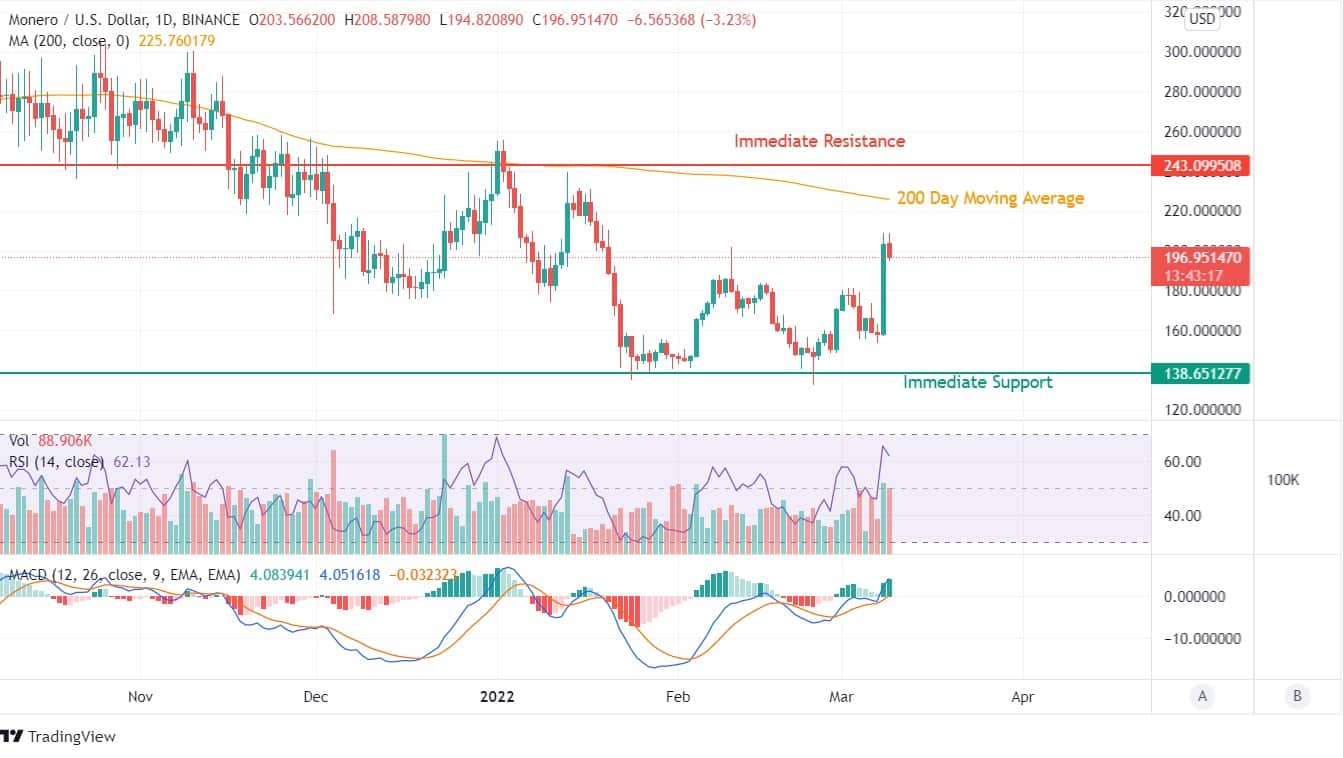Monero was an instant hit back in 2014 because of its emphasis on adding anonymity to the existing blockchain networks. Launched in 2014, XMR has evolved a lot with increased concerns about agencies tracking the transactions made in digital currencies. This key advantage of XMR being obscuring of both sender and receiver of this coin, which is the unique proposition Monero added to the currently developed blockchain networks. While Bitcoin in circulation carries its serial number, allowing others to keep track of different transactions made using a specific Bitcoin. Not only does this make each bitcoin different from the other one, but it raises more concern about the acceptance of a coin.
On the other hand, Monero was proactive in the privacy aspect; its only competitor was Zcash. XMR currently holds 37th rank in terms of the market capitalization of USD 3.56 billion, with a current circulating supply of 18 million coins. After all the remaining XMR tokens have been mined, miners will instead be incentivized by tail emissions where small amounts of XMR are added to the system every 60 seconds to ensure liquidity.
XMR Price Analysis
XMR price trend in the long term has been parabolic in nature after every fall. In 2019, it bottomed out at $36; that same raised to $450 in 2020. Currently, we are in the first phase of falling prices with support moved up by $100 to $135. Trading above its 200 DMA value will have a positive impact deciding the price trend on XMR in the long run.
XMR faces small challenges to ensure its positivity in the bigger picture. Previously we have been witnessing XMR face a tough resistance near its 200 DMA, ever since falling from its peaks in November 2021. Prices have failed to cross the $300 milestone despite overcoming 200 DMA resistance at multiple instances. As such, XMR is headed towards its prolonged battle of buyers turning into sellers near the 200 DMA curve. In terms of technical indicators, RSI has spiked near the overbought zones from neutral levels. This trend generally leads to a sudden rise in the value of the underlying token. MACD, on the other hand, indicates higher buying participation at current levels.


